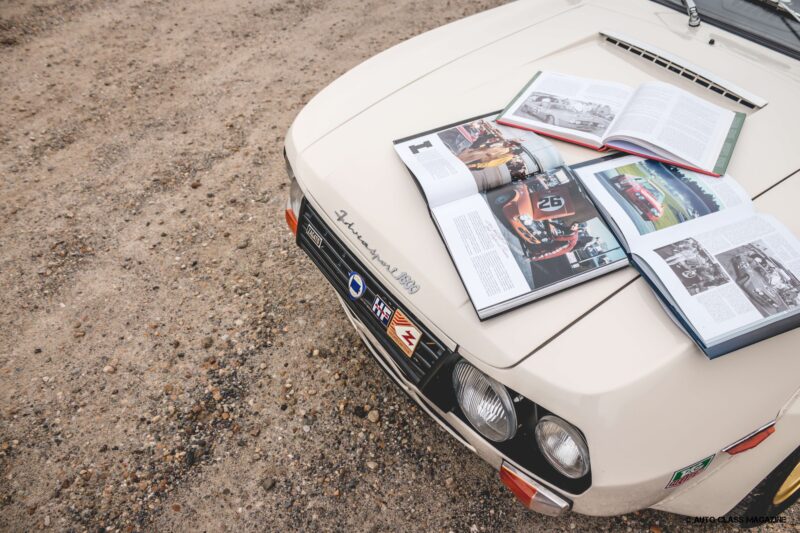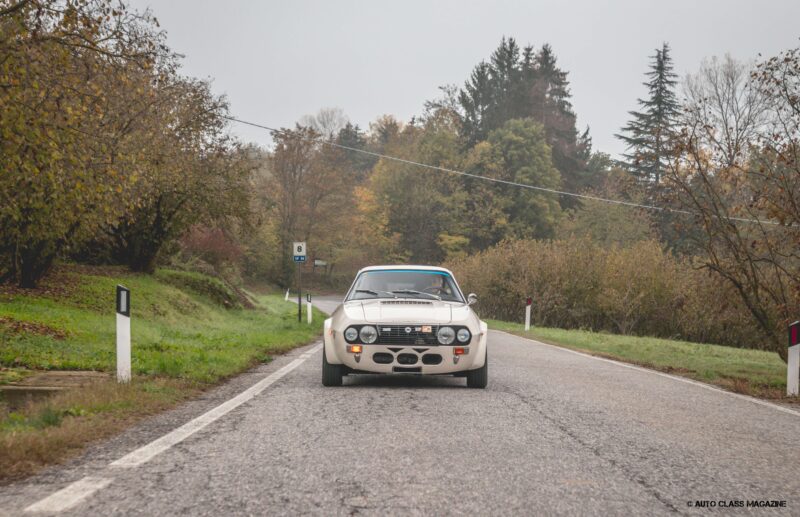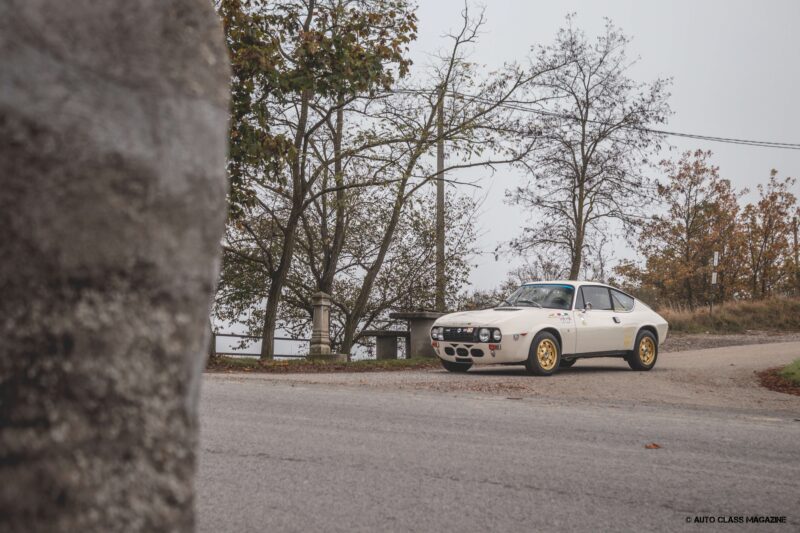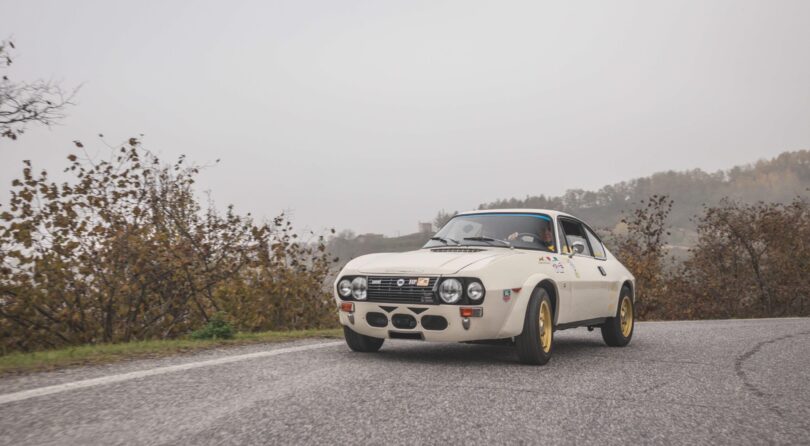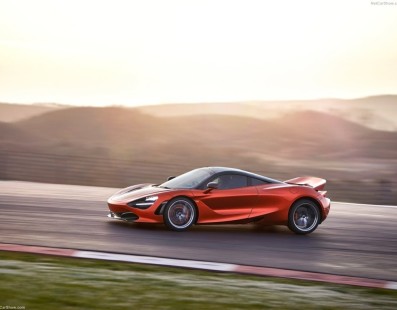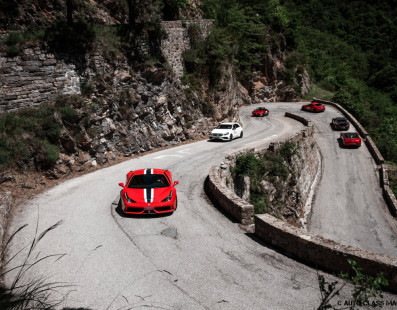Awakening the Italian hills with an exquisitely loud 1 of 3 Lancia Fulvia Sport Zagato.
Words Remigio Camilla / Photos Alessandro Marrone
My Fulvia passion began with a 1965 Blu Lancia 2C sedan and continued with the search for a very first series coupe, the Blu Mendoza presented in issue #90 of this magazine. I hadn’t thought about Zagato’s version yet and the first time I met with that happened in a casual and unexpected way. One day, during a lunch with friends, I learned that a “testa gialla” Fulvia Zagato was for sale, an interesting detail that immediately caught my attention, because 1600. Without wasting any time, the next day I got in touch with the seller thus being able to see and evaluate it in its originality, if the engine, chassis and other details corresponded to what is reported in the vehicle registration documentation. Painted in Saratoga White, with the classic non-glare black band in the center of the front hood, it had all the right body details. The 1600 HF engine was also correct, the same one mounted on the Coupe HF version with initials 818540 which changes to 818750 for the Zagato. Chassis n.001622 which corresponds to the 622/800 built and registered on February 28, 1973.
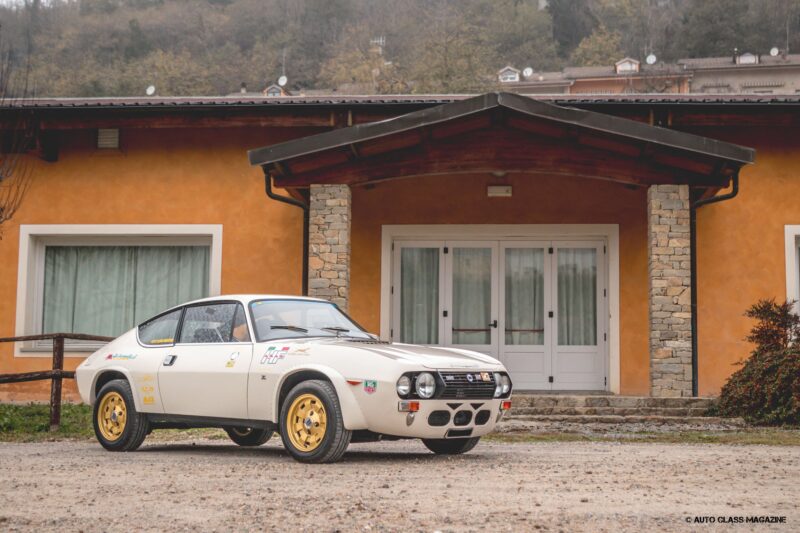
Obviously it was presented in the classic standard configuration, the current one in the Competizione was obtained during a two-year restoration project entrusted to a Savona workshop specialized in Fulvia models, where all the mechanics and chassis were removed from the bodywork in such a way that they can be treated separately without problems in subsequent different workshops. Being a second series, when Lancia was already owned by FIAT, the mechanics had suffered a general impoverishment, the commitment in the restoration carried out was above all to recover the original Lancia specifications as much as possible. The front subframe with engine unit and suspensions, on this model does not correspond to the Coupe 1600 HF, but to the Coupe 1300 S, with the front suspensions equipped on the top with a metal stamping which gives rise to a positive camber not very suitable for the car’s performance and also unpleasant to see in a sports car. They have therefore been completely revised according to the specifications of the HF, using the two overlapping tubular triangular arms which allowed to obtain a negative camber. The steering arms have been lengthened to obtain a smaller angle of rotation of the steering wheel when cornering and 2 cm spacers have been added on each wheels. The braking system has been completely replaced, eliminating the double circuit in favor of a single circuit and adopting a larger brake booster, the entire chassis has been sandblasted and repainted.
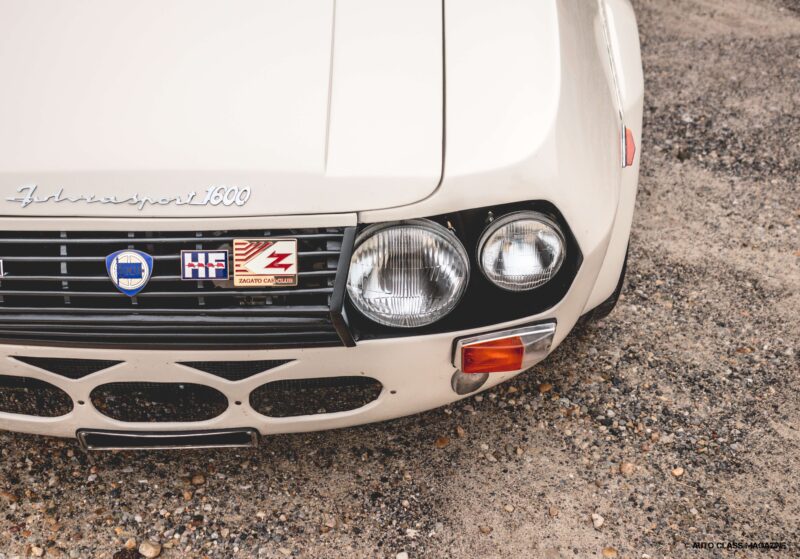
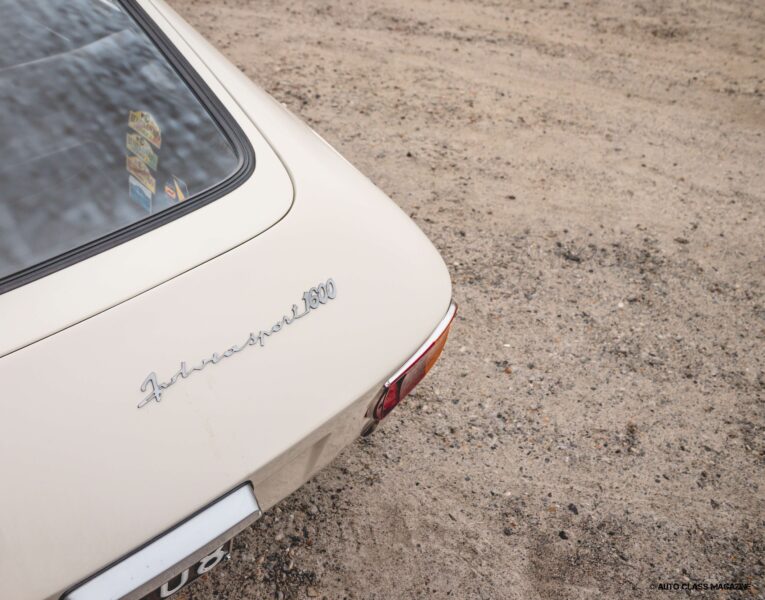
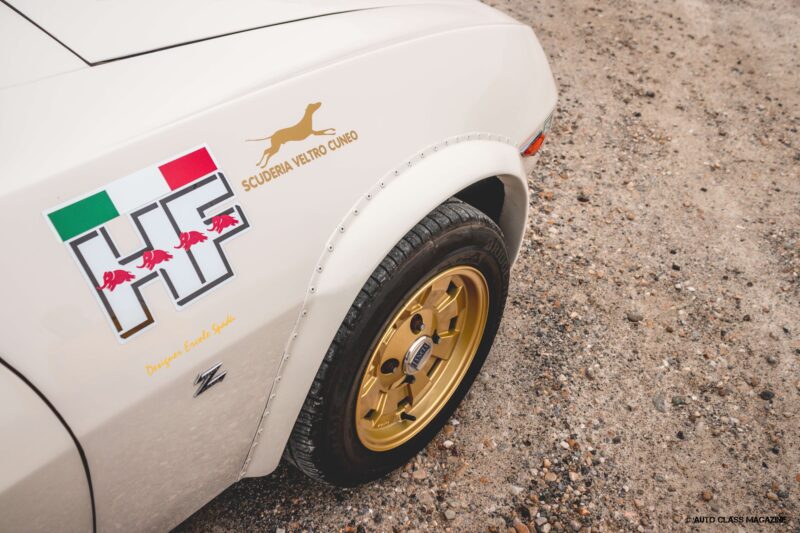
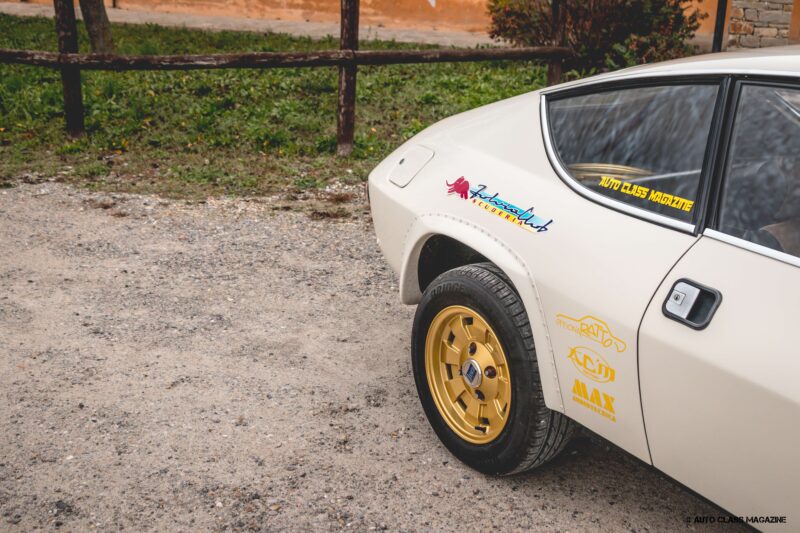
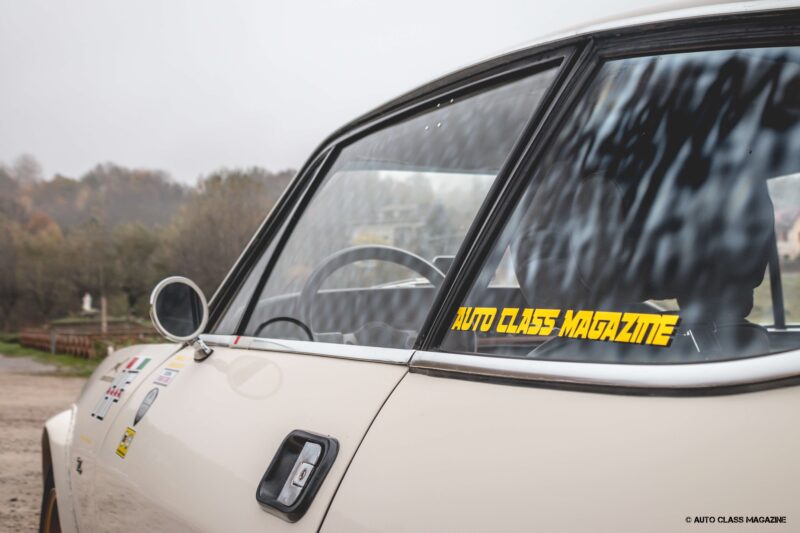
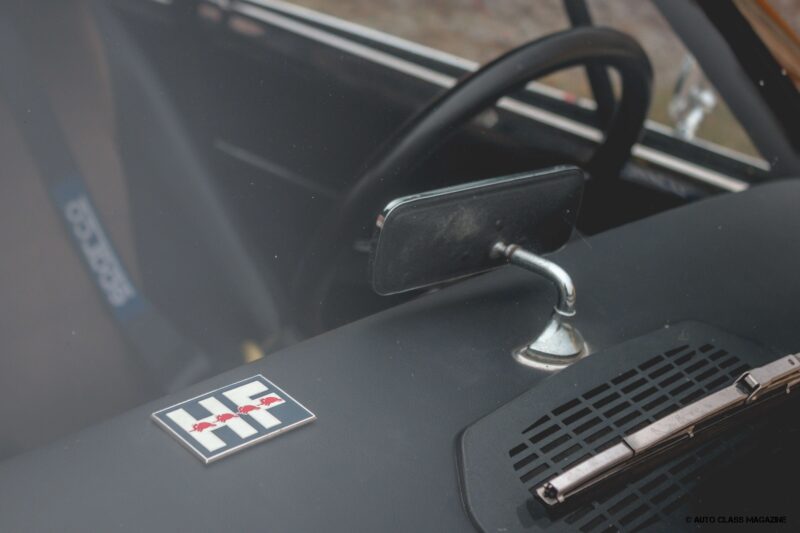
The original engine featured many cheap construction solutions, all the internal nuts and bolts were of FIAT derivation, 8/8 quality, the camshafts were those of the 1300 S version, all elements that made the Sport 1600 far from the Coupe Fanalone from which it is thought to derive. In overhauling the engine in all its parts, even the internal nuts and bolts were replaced with 10/10 copper-plated Lancia bolts, the camshafts were revised and the 42 Solex carburettors were completely overhauled. The lack of an oil cooler was compensated by a heat exchanger positioned on the oil filter connection. At the same time, a Saliceto workshop specialized in Fulvias carried out the complete restoration of the bodywork which began with the setting up of the skeleton, to recover the small sagging and twisting suffered over the years, followed by the re-welding of all the important structural and the positioning of stiffening gussets on the front part which is particularly subject to stress courtesy of the 114 horsepower of the engine. The underbody attachments of the engine and suspension subframe have been completely redone and strengthened. With the negative camber and the increase in track it was inevitable not to place profiles all over the wheel arches and the current version took shape.
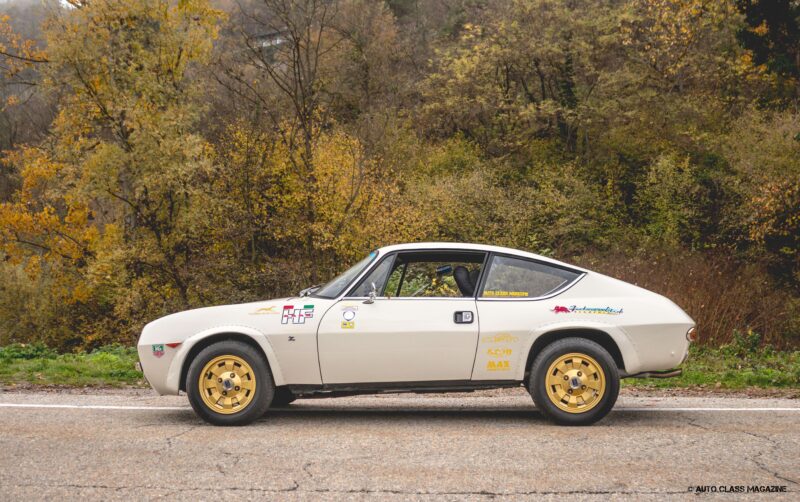
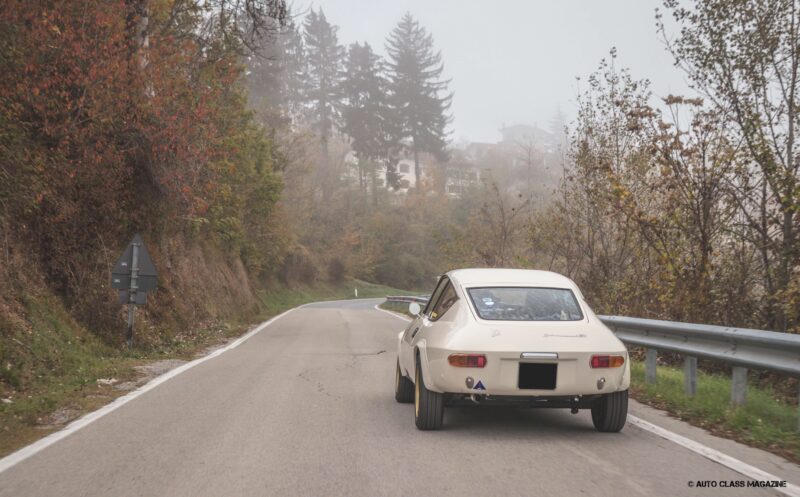
On the market there were only poor quality products, with a fiberglass mold that did not adapt well to the profile of the body. Thanks to its contacts, the mechanical workshop managed to complete a set of fiberglass tailpieces found by a Roman collector, who had obtained them from the original molds of the Competizione version. They matched perfectly to the bodywork to which they were riveted in the prearranged points as on the Competizione. The result obtained was satisfying, but another thought had crept into my mind. The competition versions are all 1300cc, mine is a 1600cc. However, I knew that the Lancia Racing Department had created a Competizione prototype with a 1600 engine, the famous Daytona, so called because it had run the 24-hour race in Florida on 2 February 1969 with drivers Claudio Maglioli and Lele Pinto, obtaining one of the most prestigious result ever, 11th overall and 1st in the prototype class. The grueling race also took place at night, therefore the rectangular lights had been replaced with 4 round lights, of which the internal ones had a larger diameter. The idea of the four headlights stimulated me a lot and with the help of the Savona workshop I was able to get the ones with the right diameters. A special sheet metal support was created in the bodywork, so as to be able to contain them in the niche of the original ones. Lastly, the two triangular air intakes placed under the grille were created. Now it was right, the work was finally completed.
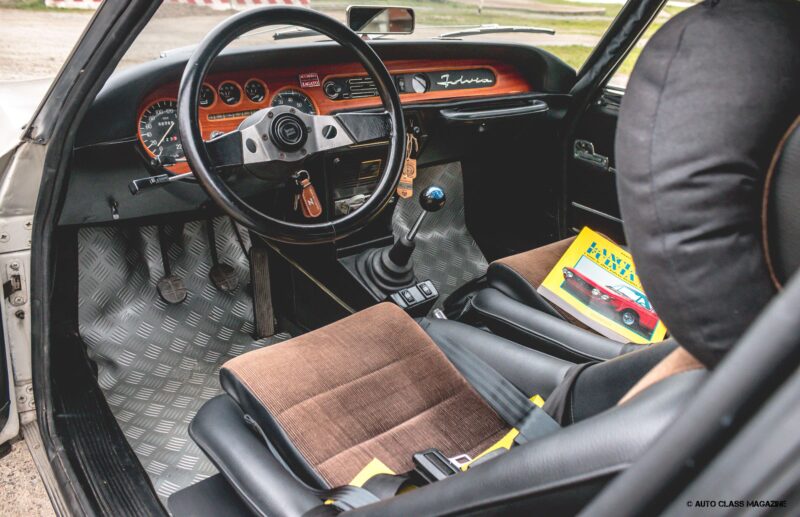
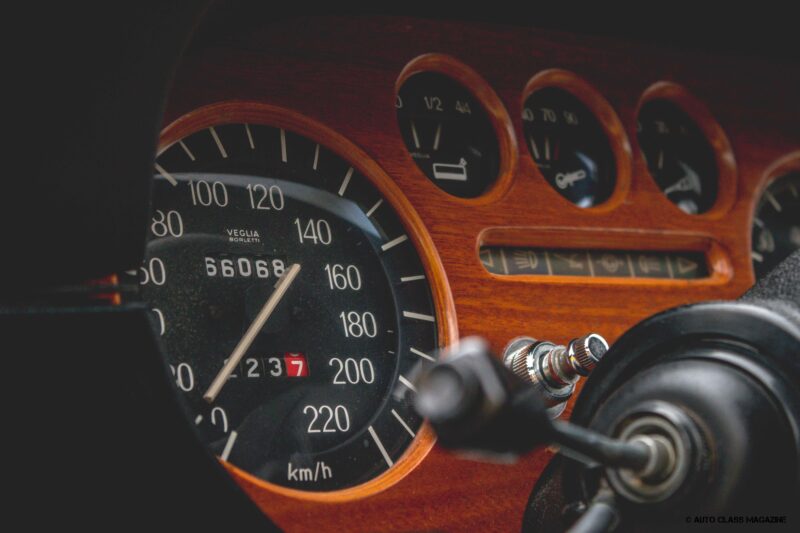
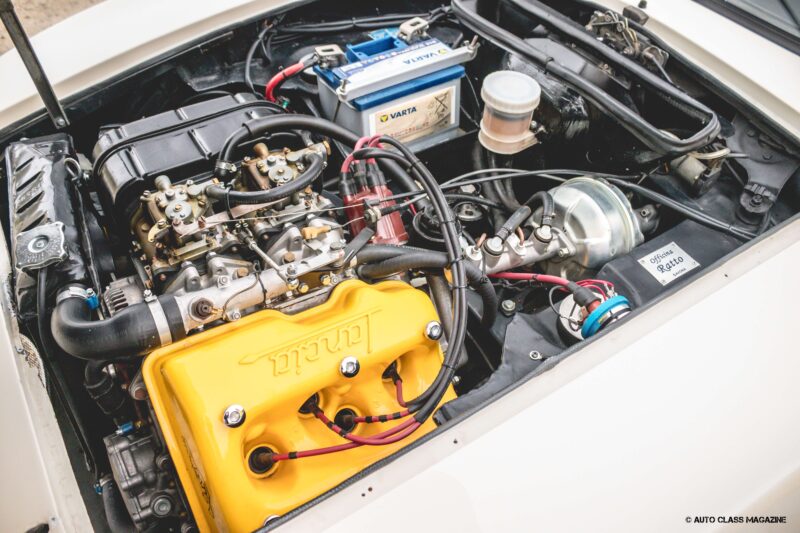
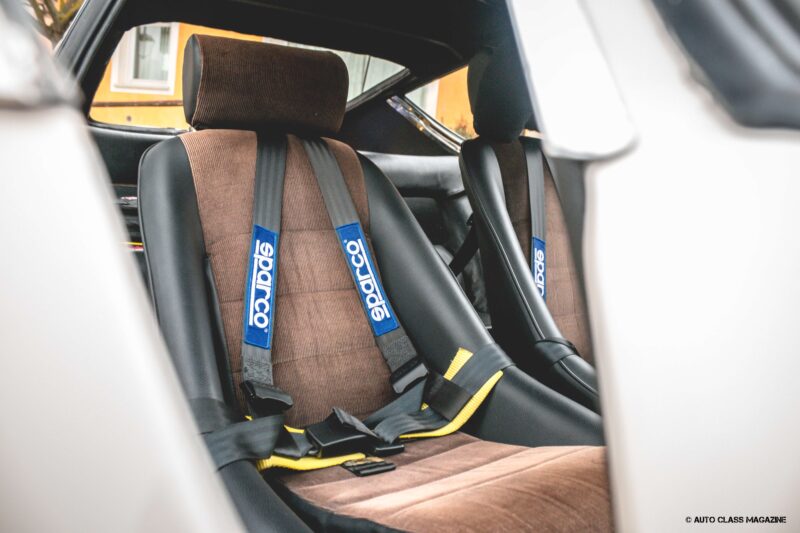
The Sport 1600 belongs to the second series Zagato, no longer built in peraluman, but entirely in sheet metal. This choice had been dictated by the need to obtain greater general strength and torsional rigidity as well as favoring its coupling to the standard sheet metal platform supplied by Lancia, as it could be directly welded onto it and not riveted as previously due to incompatibility of the two metals. The second series, to which the Sport 1300 S model also belongs, was completely redesigned by Giuseppe Mittino. The front pavilion was increased by a few centimeters for better roominess in height and the rear spare wheel compartment door was eliminated. The same, positioned in the luggage compartment and visible behind the rear bench, is accessible through the tailgate which opens electrically. In compliance with the new safety regulations introduced, the bonnet no longer opens like a book hinged to the side, but opens against the wind, hinged frontally. The bumpers are then equipped with rubber overriders both front and rear, while on the Sport 1300 an unfortunate black rubber band is applied to the bumpers. The grille and headlight surrounds are now made from lightweight aluminum instead of chromed steel. The rear lights are no longer those of the NSU Prinz 4, but are derived from the Peugeot 204 Cabrio and Coupe, later also used on the sedan. The license plate light is no longer inserted in the steel bolts, but a plastic light with an aluminum-like finish is used, located in the center of the body above the license plate. Fast and economical solution that slightly worsens the rear aesthetics especially if seen in profile, ‘cause of its protrusion.
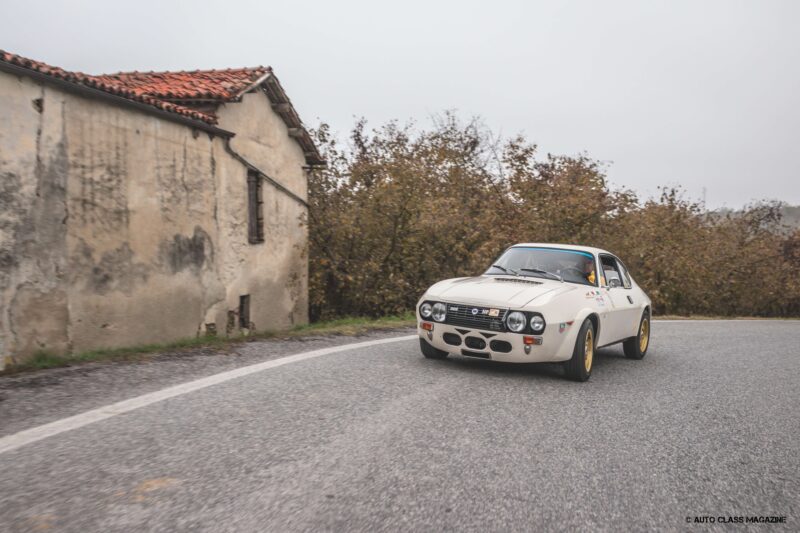
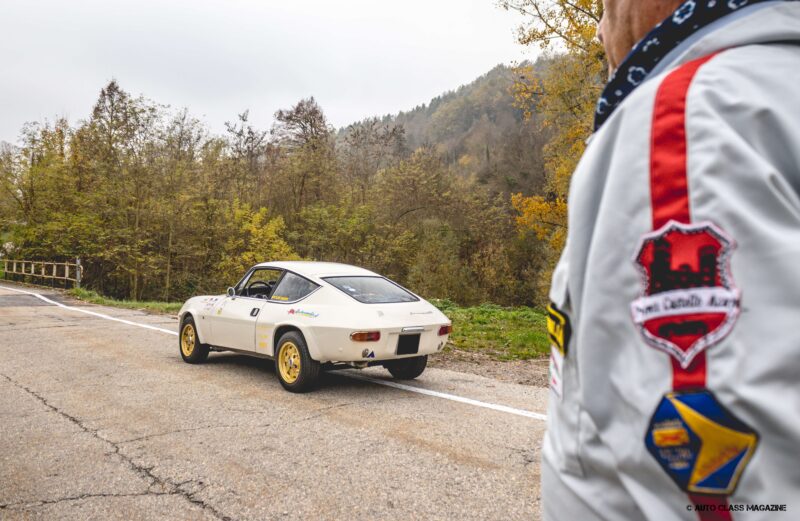
Elements of instant recognition of the Sport 1600 are the matt black band on the front bonnet and the flat rectangular door handles built-in with the bodywork, made of zamac. The chromed frames of the glass surfaces are also eliminated in favor of a black rubber gasket, a solution which tends to lighten the body. Internally, the dashboard of the Sport 1600 has an odometer with full scale at 220 kph, the clock on the right on the Sport 1300 S is replaced with the oil thermometer, the gearbox is a 5-speed derived from ZF with an almost vertical short lever and the first gear at the bottom left; at the tip of the gearbox tunnel in front of the seats there are the buttons for the electric windows. Sitting behind the wheel of the Fulvia Sport is not like sitting in the Coupe, with its turret-shaped passenger compartment, a slightly inclined front windscreen, all elements which allow excellent lateral and rear visibility. The passenger compartment of the Sport is compact, low, with the front windscreen and side windows inclined and tapering towards the top, the rear window is almost horizontal, the space between the head and the roof is very little. The gear position and its maneuverability are excellent even if with a somehow long run, the first gear down feels like being on a real sports car. External visibility is limited though and the passenger compartment seems almost designed to focus the attention for the front occupants, the rear-view mirror is positioned at the bottom center of the dashboard eyelid, as if it were positioned high up it would create disturbance. The passenger compartment developed in a single volume narrows and lowers considerably up to the rear, immediately creating a feeling of sportiness and by virtue of this fact we make ourselves available to overcome all those small inconveniences that can be encountered in a space that is dimensionally functional to the aerodynamics.
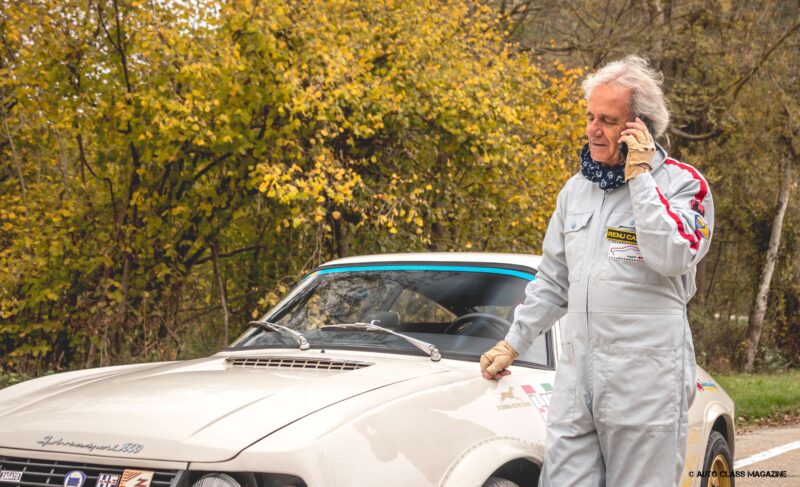
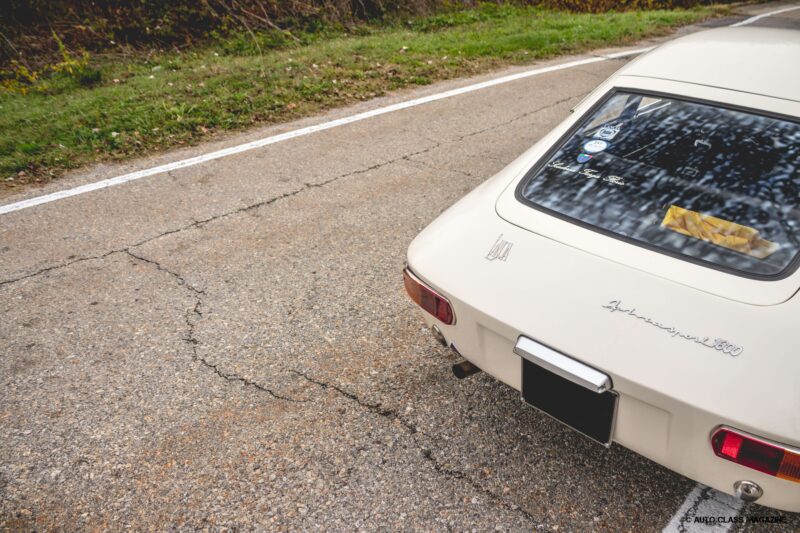
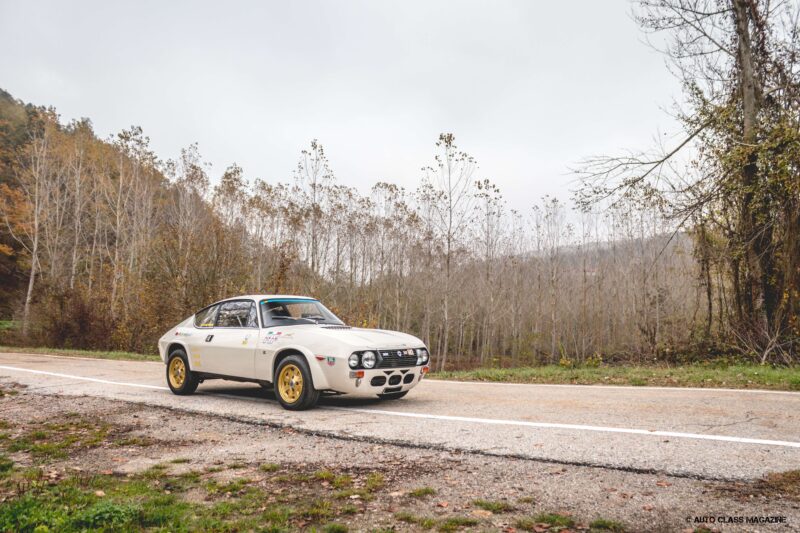
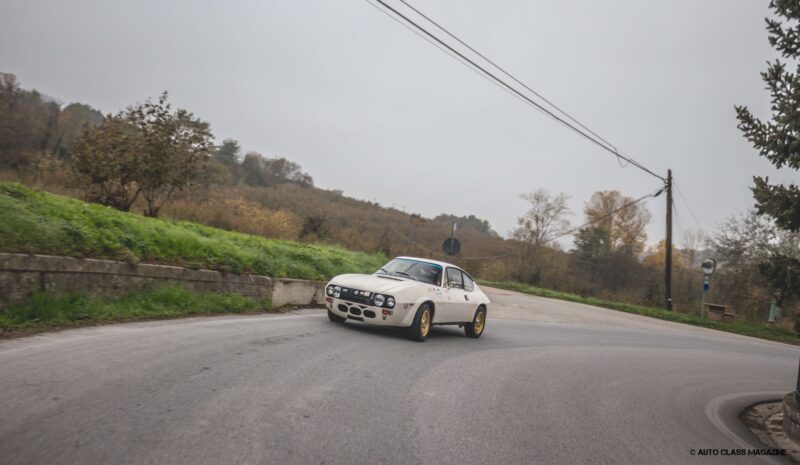
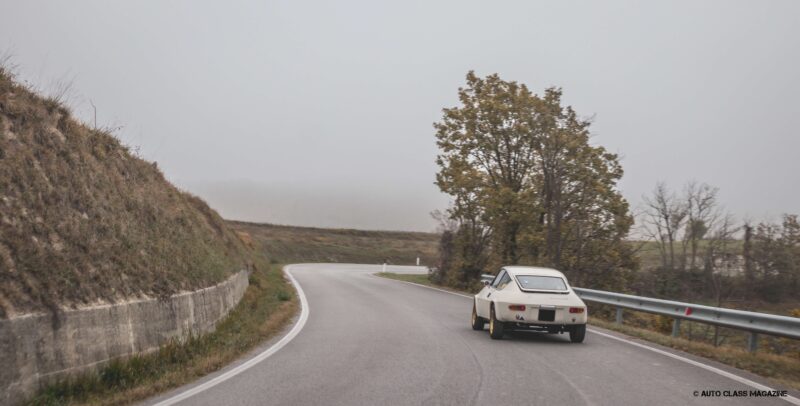
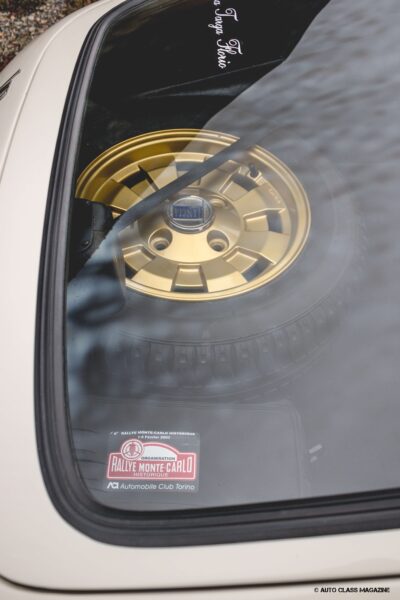
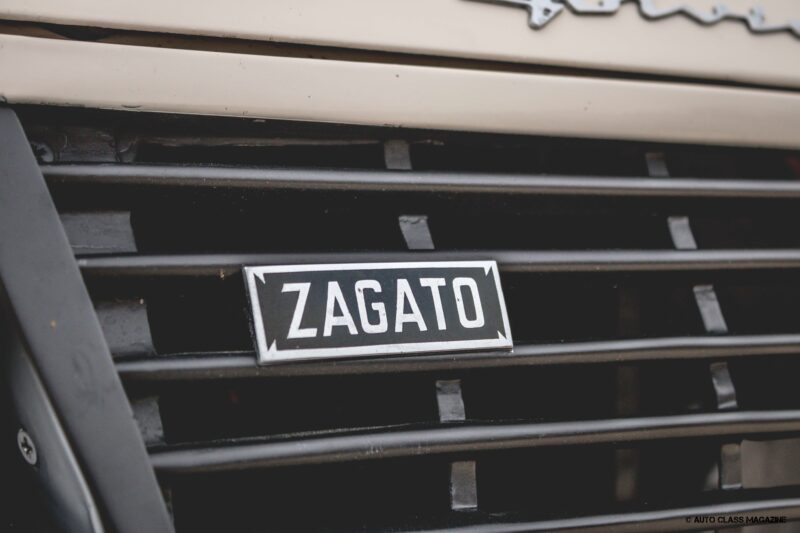
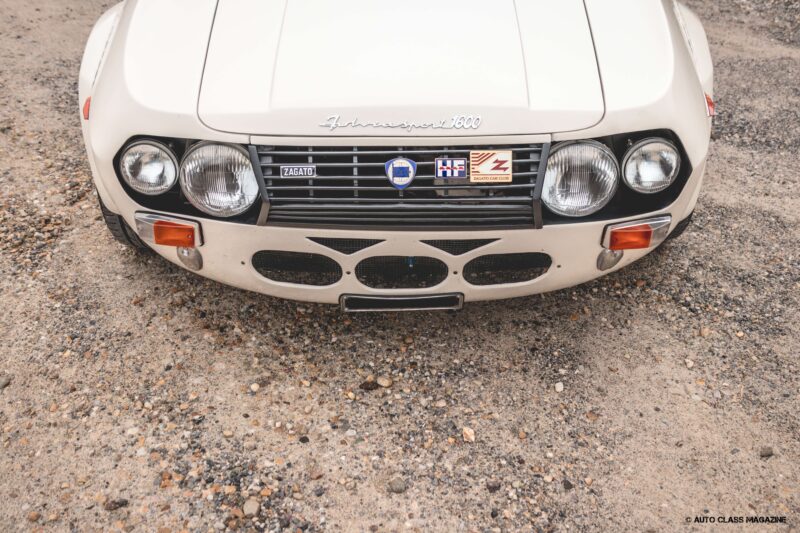
Driving is fun precisely because the car is small and lean, the engine – if carburetors run smooth – is ready with a lot of torque and becomes extremely pleasant on uphill roads with curves. With a straight exhaust, the rumble is very exciting. All Fulvia Sports are made in a dimension that is not entirely industrialized, thus maintaining the characteristic of a certain constructive craftsmanship which leads them to differ from each other in some details, making them almost unique models. In the case of my 1600, on the front bonnet above the air intake there was a small plate in pressed and shaped sheet metal painted in the same color as the body. For years I thought it wasn’t original, fitted later instead of the black or chromed plastic one usually seen on the Sport. After a long search I managed to find this detail at the Padua Fair, but after swapping it I discovered on the internet some photographs of a Sport 1600 with the same type of sheet metal tile: at that point I understood that it was a rare and original detail.
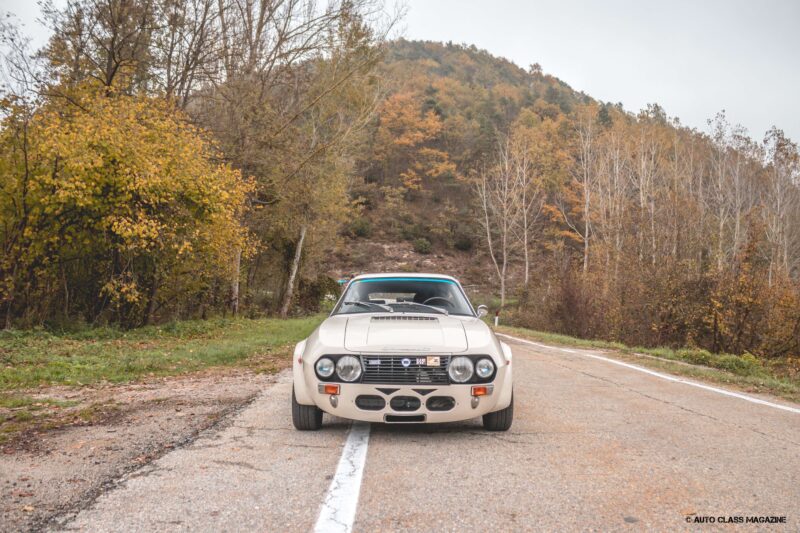
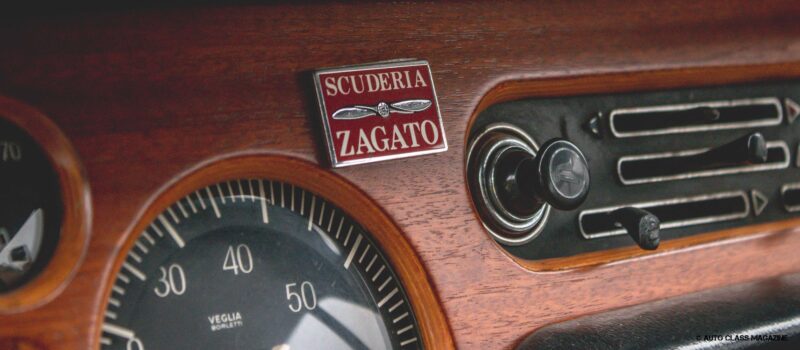
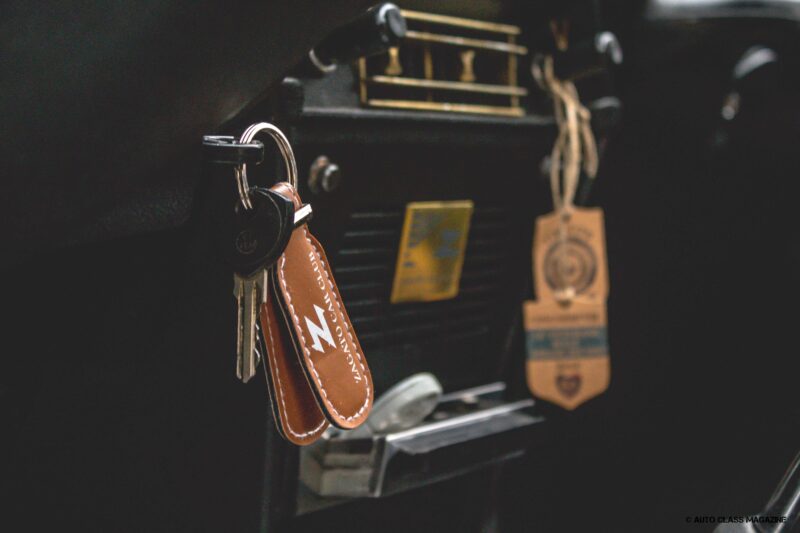
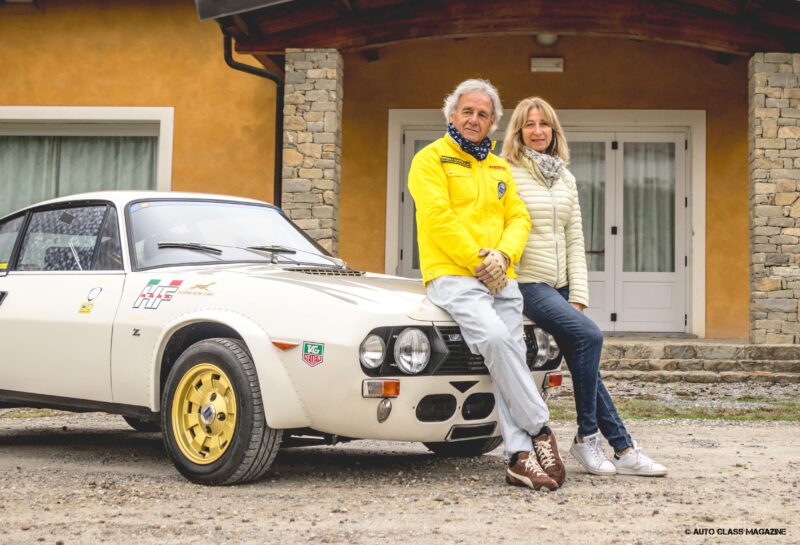
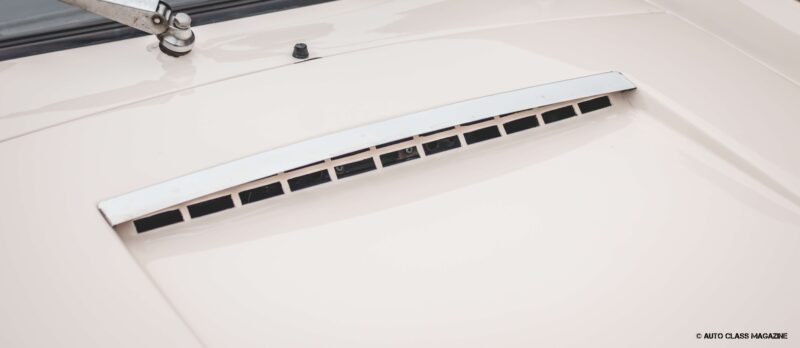
The task of creating a version of the Fulvia Sport was entrusted to Zagato in mid-1964, when still directed by its founder Ugo Zagato and then by his sons Gianni and Elio. A very young Ercole Spada had just started his career as a designer in the new plant in Rho, on the outskirts of Milan. Spada had approached the new project in a free and very personal way, without following the fashions of the moment, without introducing the truncated tail created by himself, so creating a two-volume sports berlinetta with tail descending rapidly downwards, perhaps following volumetric stylistic features more related to the sports cars of the 50s, even if resolved in a decisive and modern way. The line is very dynamic, the front volume is very muscular due to the mechanics having to hide the engine block in a high position, then taper and thinner towards the tail, which is one of the most characterizing and fascinating elements of the car.

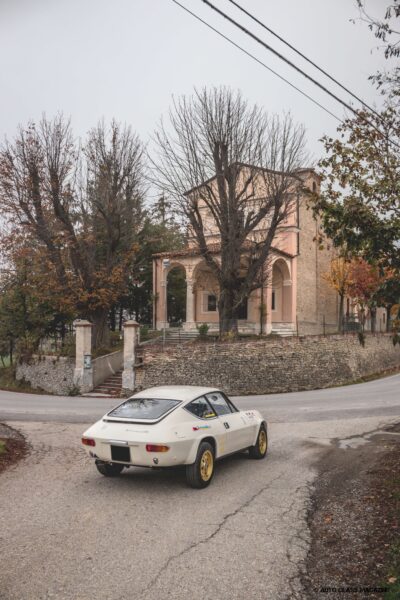
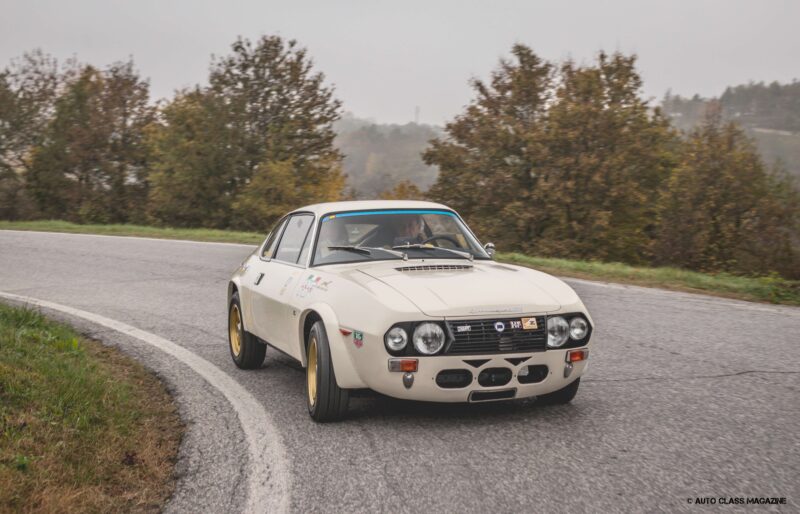
With this type of low and profiled tail, Ercole Spada manages to achieve the same dynamic effect of the truncated tail. Even the volume of the passenger compartment gradually shrinks as it rises from the belt line. Ercole Spada himself says that the Fulvia Sport is difficult to perceive and understand through drawings, you need to see it in real life moving, because it is a shape that changes continuously in relation to the point of the beholder. Even the fins of the front mudguards tend to raise the profile, as Ercole Spada says: “They are not a concession to style, but have the function of giving an exact perception of direction and dimensions, a requirement that comes from the racing world”. Spada’s project was divided into three distinct proposals and he also recounts that Elio Zagato had left for the Côte d’Azur with the drawings to be submitted to Carlo Pesenti, then owner of Lancia. Arrived in Ventimiglia at the border with France, he was stopped and all the drawings immediately seized by the customs officers, who thought of an illegal export of works of art. Only after some worrying moments, things were cleared up and the drawings returned. When Pesenti saw the three proposals, he chose the one Spada preferred and everything ended in the best possible way.
